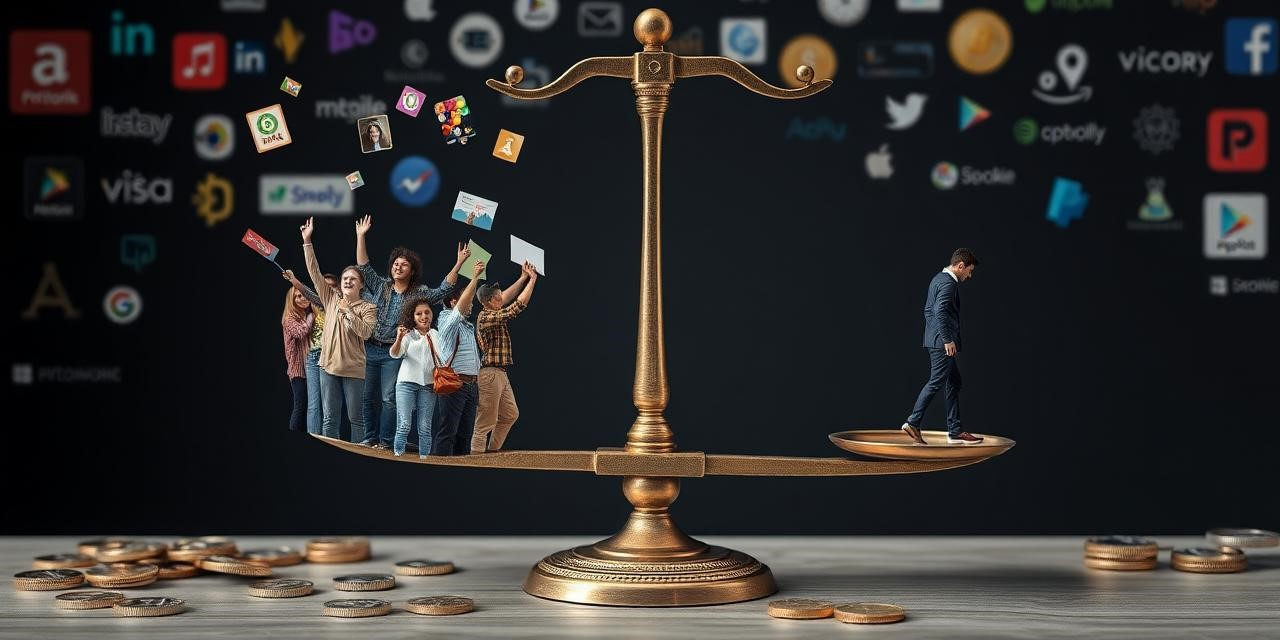The creator economy… sounds dreamy, right? Quit your awful job, unleash your inner artist, and get paid directly by your adoring fans. Crowdfunding is a huge part of that promise. But is it real freedom, or just another pretty trap built on shaky finances and the internet’s fickle nature?
As someone who investigates fraud for a living, I’ve seen enough “revolutionary” schemes to be skeptical. Let’s see if crowdfunding really helps creators, or if it’s just another way to get exploited.
From Street Performers to Digital Dollars: A Crowdfunding Origin Story
Crowdfunding isn’t new. Think of a musician on the street with a hat for tips, or people donating to publish a book. What’s new is how big and fast it is now. Kickstarter and Indiegogo blew up in the late 2000s, giving everyone access to funding like never before. Suddenly, anyone with a good idea and internet could raise thousands, even millions!
At first, everyone loved it. Crowdfunding was supposed to shake things up, helping artists, game developers, and entrepreneurs skip the traditional gatekeepers like investors and publishers. And sometimes, it actually worked. Really well.
Crowdfunding Success Stories: When It All Clicks
Some projects really hit it big. Take Bloodstained: Ritual of the Night. It’s basically a Castlevania sequel made by Koji Igarashi, a gaming legend. He raised over $5.5 million on Kickstarter. He already had fans, sure. But crowdfunding let him make the game he wanted, without some publisher breathing down his neck. It was a win for Igarashi, and a win for the fans who got the game they wanted.
Or what about indie filmmakers using Seed&Spark? They keep control of their movie, connect with their audience, and build hype before it even comes out. This is crowdfunding at its best: creators get money, and backers get to be part of something they believe in.

The Crowdfunding Catch: When Good Intentions Go Bad
But it’s not always sunshine and rainbows. For every Bloodstained, tons of projects fail, leaving backers feeling ripped off. Sometimes it’s just bad luck or incompetence. Other times… it’s a scam.
Remember the Star Citizen mess? It’s not exactly crowdfunding, but it’s similar. People pre-paid for a game that’s still not finished. Millions and millions have been pledged, but the game’s still in alpha after all these years. No one knows when it will actually be released. Is it a scam? Maybe not. But the delays and lack of transparency are definitely worrying.
And then there are the smaller scams. Creators promise the world, take the money, and disappear. I’ve investigated cases like this myself. Backers are left with nothing but broken promises. Because there’s not much oversight, crowdfunding is an easy target for scammers.
Who Really Holds the Power? How Platforms Can Make or Break You
Even if a project is legit, success is not a given. The algorithms on these platforms are mysterious and always changing. It’s hard to get noticed among all the other campaigns. Creators often have to spend a ton on ads just to get their project seen. This eats into their profits and defeats the purpose of crowdfunding.
Plus, platforms take a cut – usually around 5%. It seems small, but it adds up, especially for big projects. And don’t forget the fees from payment processors like Stripe and PayPal. By the time everything is said and done, creators can lose a big chunk of their funding.
Beyond Crowdfunding: Other Ways to Get Funded
Crowdfunding isn’t the only option. Creators are finding new ways to get funding that give them more control and more stable income.
Equity Crowdfunding: Own a Piece of the Pie
This lets creators offer equity in their company for funding. It’s more complicated than regular crowdfunding, but backers get a real stake in the project’s success. WeFunder and StartEngine are making equity crowdfunding easier for smaller businesses.
Subscription Models: Recurring Revenue
Patreon and similar platforms let creators build a steady income by offering exclusive content to subscribers. This is more reliable than the rollercoaster of crowdfunding campaigns.
Embedded Finance: Financial Tools for Creators
This means putting financial services directly into the creator’s workflow. A platform might offer instant advances on future earnings, or tools for managing finances and taxes. This helps creators manage their cash flow and avoid relying only on crowdfunding.
Crowdfunding Survival Guide: Tips for Creators
Thinking about crowdfunding your project? Here’s some advice I’ve learned the hard way:
- Do your homework. Research different platforms and pick the one that fits your project and audience.
- Build an audience before you launch. Don’t expect money to magically appear. Connect with fans on social media, build an email list, and create a community.
- Make a killer pitch. Your project page is your sales page. Be clear, concise, and show off your work!
- Be honest and open. Keep backers updated, even when things go wrong. Trust is key.
- Have a realistic budget and timeline. Don’t underestimate costs, and be prepared for delays.
- Know the legal stuff. Crowdfunding income is taxable, and you might need to follow certain regulations.
The Bottom Line: A Tool, Not a Miracle
Crowdfunding is just a tool. It can be used for good or bad. It won’t magically make you successful. It takes hard work, dedication, and a dose of reality. If you use it right, it can help you bring amazing projects to life. But be aware of the risks and go in with your eyes open.
The creator economy is changing fast, and new funding methods are always popping up. The key is to stay informed, adapt, and always focus on your audience. They’re the ones making your dreams possible, after all.


